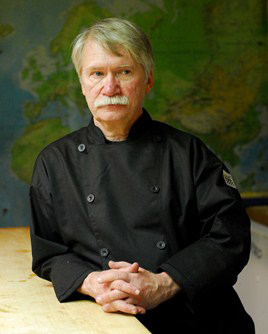Guest Speaker: Is It Time to Reinvent Culinary Education?
04 October 2013
 As high-school seniors yearn to become star chefs, more colleges consider the leap to culinary education. The result is a glut of programs all vying to meet enrollment goals. Meanwhile, the cost of a quality culinary education far exceeds earning potential.
As high-school seniors yearn to become star chefs, more colleges consider the leap to culinary education. The result is a glut of programs all vying to meet enrollment goals. Meanwhile, the cost of a quality culinary education far exceeds earning potential.
By Paul Sorgule, MS, AAC
Although it seems impossible to find an accurate number, it appears there might be as many as 2,000 programs in the United States that offer some form of “professional” culinary degree or certificate.
The cost of providing quality educational programs has skyrocketed as colleges strive to remain competitive with student-to-faculty ratios, state-of-the-art facilities and sufficient equipment to meet the needs of the curriculum and provide the right amount of “sizzle” to attract students.
As high-school seniors and career changers become more enthralled with the marketed glamour of working in kitchens and a vision of becoming a star chef, more and more colleges consider the leap to culinary education.
The end result is a glut of programs all vying to meet their enrollment numbers. Enrollment standards inevitably begin to lax while program faculty face the challenge of trying to teach and train an ill-prepared audience for the rigors and realities of kitchen life.
Here are the real challenges that educators face:
- The cost of a quality culinary education far exceeds the earning potential of most graduates in their first 10 or so years in the kitchen.
- Even with thousands of culinary graduates each year, restaurants are challenged to find cooks who are adequately prepared.
- Far too many graduates have exaggerated career expectations when they complete a program.
- The U.S. Department of Education and regional accrediting bodies are very concerned about the cost of education/earnings gap. Most culinary-school graduates will likely begin as either a prep or line cook and stay in that rotation for the first few years, earning an hourly wage without benefits.
- A growing concern is the retention rate of students in culinary programs and a high attrition rate of people entering the industry after graduation.
- Internship programs are the training lifeblood of a quality program, yet they are typically very loose, properties are rarely trained as internship sites and, in some cases, internships do not align with a restaurant’s season, making the process cumbersome for chefs and restaurateurs.
- Far too few graduates consider alternative career tracks to working in high-end restaurants. Business-and-industry foodservice, hospitals, college dining programs, product development and teaching all take a back seat to a student’s desire to seek the excitement and “glamour” of working in a critically acclaimed à la carte restaurant.
Is it time to reassess what a culinary program should look like? If you believe the answer is yes, then every program dean and department chair should attend CAFÉ’s Deans and Directors Retreat, “Managing Change,” next February in Chicago.
Paul Sorgule, MS, AAC, president of Harvest America Ventures, a “mobile restaurant incubator” based in Saranac Lake, N.Y., is the former vice president of New England Culinary Institute and a former dean at Paul Smith’s College. Contact him at This email address is being protected from spambots. You need JavaScript enabled to view it., www.harvestamericaventures.com.
Additional Info
- CAFÉ Talks Podcast Lesson Plan: 1
